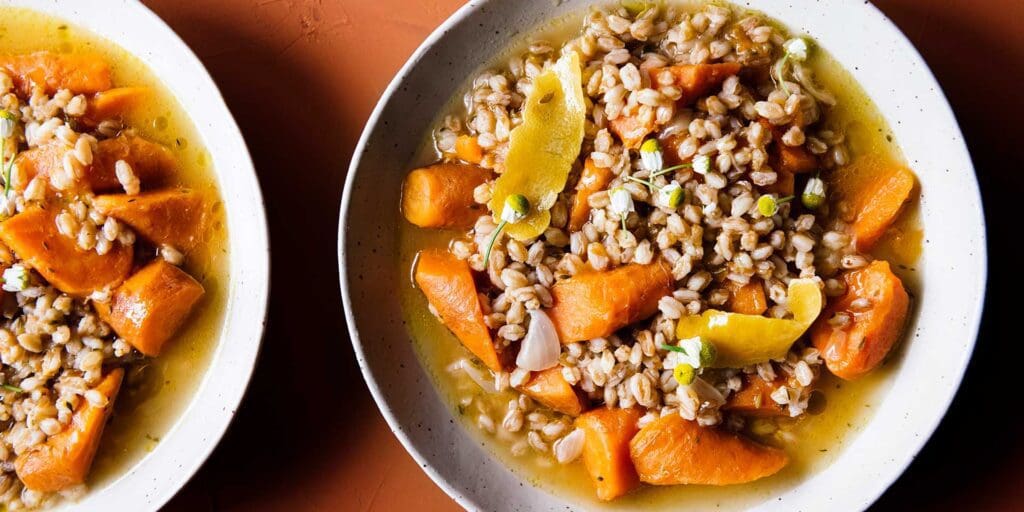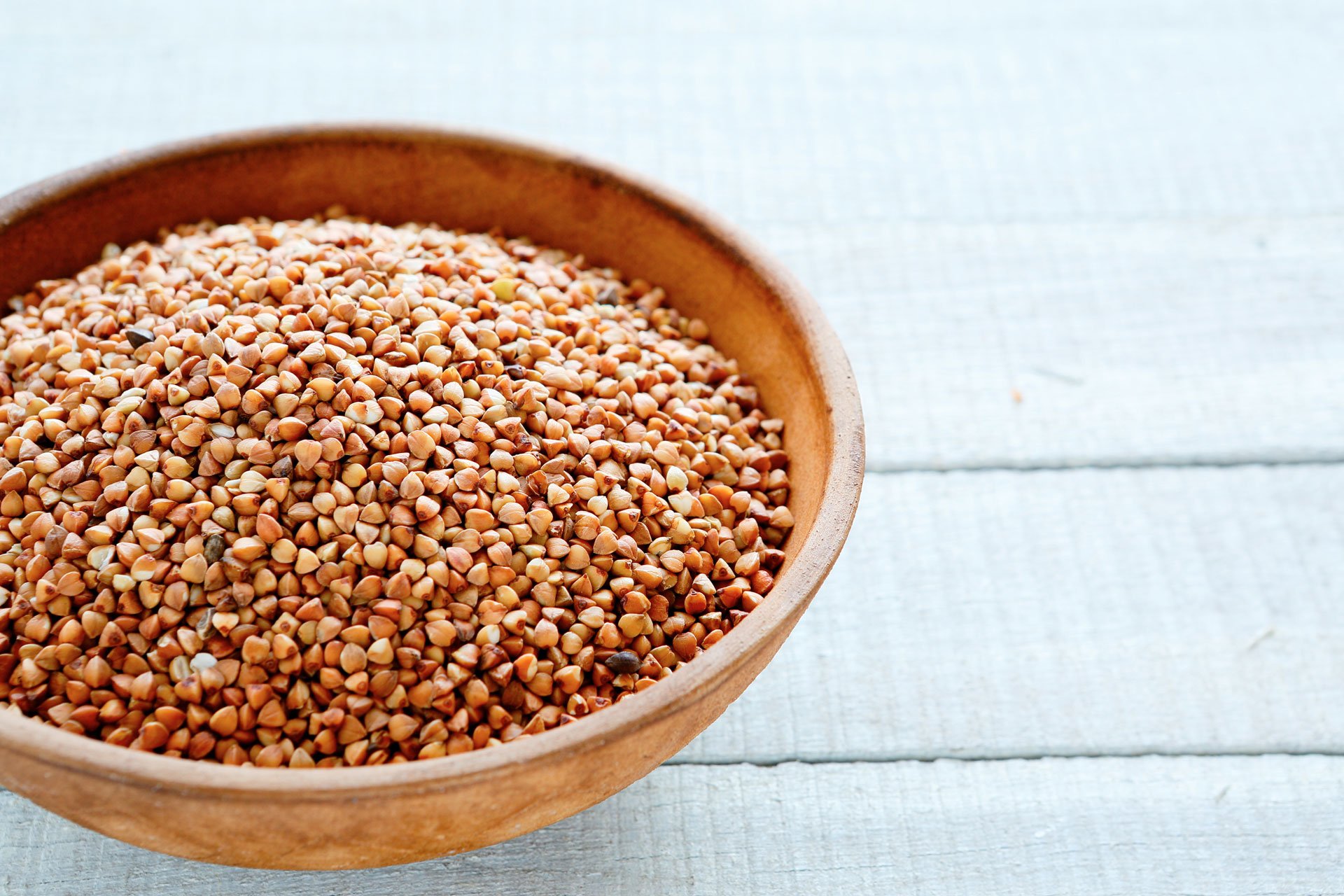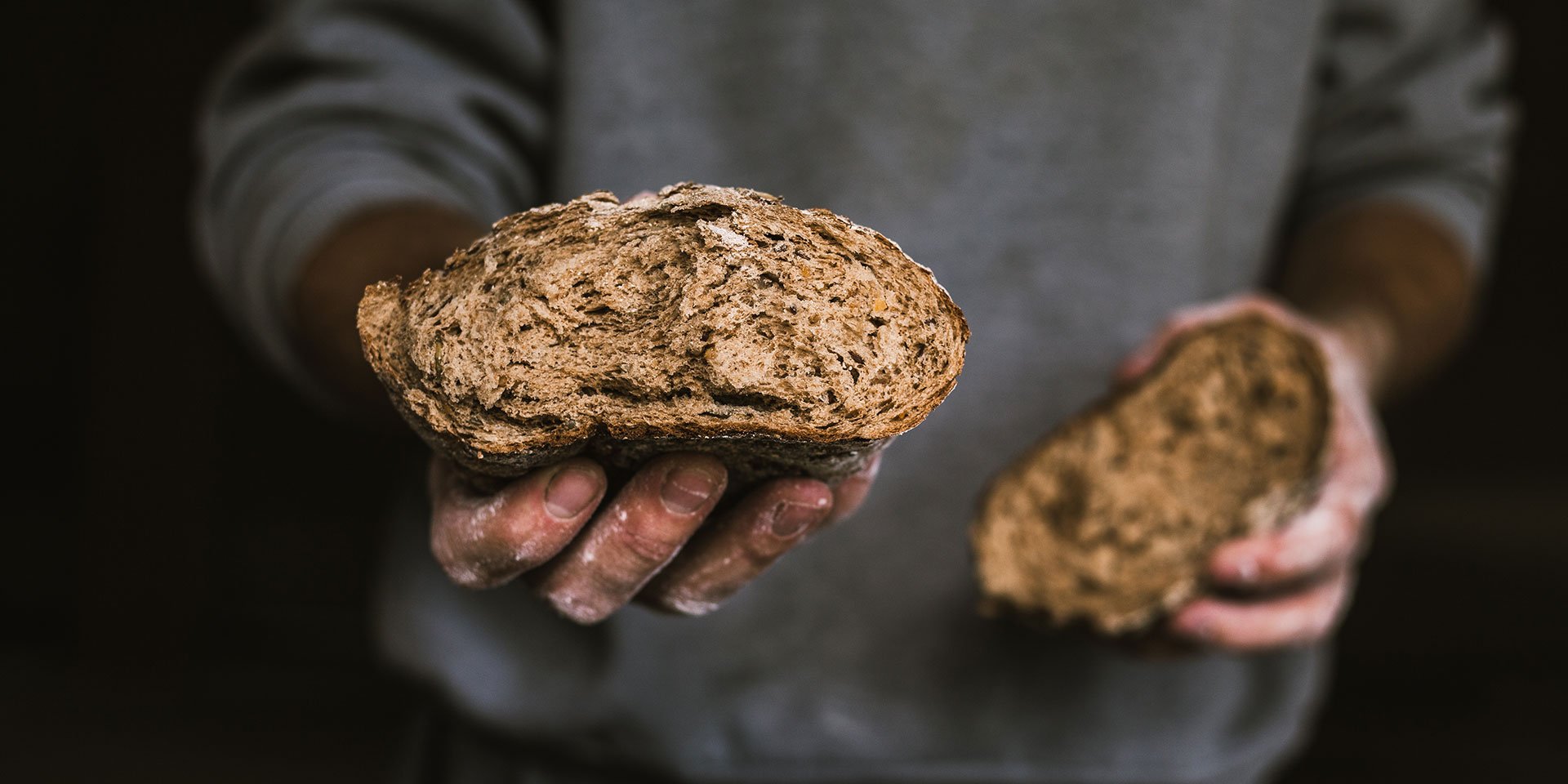Eat healthier and better for the planet with these whole grains cookbooks
Modern health advice is rooted in the wisdom of a diverse diet, rich in whole grains. The nutritional benefits are undeniable: Whole grains contain many minerals, vitamins, antioxidants and phytochemicals, and are linked to lower risks of heart disease, diabetes, certain cancers and other health problems. And yet so often, meals in the U.S. are accompanied by white rice, white bread, pasta — pantry staples that are familiar and easy to prepare.
Whole grains, on the other hand, may carry old reputational baggage as hippie food or cause trepidation for those new to cooking with them. (Do you know how much water you need to cook millet?) And while varieties of white and brown rice pack supermarket shelves, ingredients like buckwheat or amaranth can be trickier to find, meaning many whole grains may not be on your radar at all.
“I never took much notice of different grains,” writes chef and cookbook author Abra Berens in the introduction to “Grist,” her second cookbook. It’s a sentiment many can likely relate to. But after becoming the chef at Michigan’s Granor Farm, Berens encountered a diversity of grains and began to use these “underappreciated staples” for more than porridge or baked goods. Hers is just one of a number of recent grains-focused cookbooks that provide an opportunity to expand our own pantry and recipe repertoire.
Another comes from Portland, Oregon-based chef Joshua McFadden. He first discovered farro while in culinary school in Italy — and found that, when making risotto, he preferred the grain to rice. “Chewier, denser texture, deeper flavor, starchy enough to be creamy but not mushy,” he writes “Grains for Every Season,” published in 2021. “I loved it.” McFadden’s recipes and restaurant menus incorporate grains like spelt, freekeh, bulgur, wheat berries, barley, millet and quinoa, farro is still his favorite.
Over the past decade, farro and other “ancient grains” have become trendy as marketers latch onto their nutty flavors and nutritional benefits. Food media seems to “rediscover” them over and over: In 2010, The Atlantic documented the rising interest in freekeh, and The New York Times did the same nine years later. The Guardian identified fonio, a type of millet widely grown in West Africa, as “the grain that would defeat quinoa as king among foodies” in 2014; nearly a decade had passed when Civil Eats speculated that fonio could be the “ancient grain of the future” for its ability to grow in poor soils and drought conditions with little to no inputs.
The trending on repeat might cause an eye roll, but it also begs the question of why these whole grains never quite break through. For fonio, one issue has certainly been availability. As Civil Eats documented, fonio is difficult to process and little infrastructure exists to support the industry. But Yolélé, a company that works with smallholder farmers to export fonio around the world, is one of several that are investing in new infrastructure to increase fonio production.
“Although fonio has been around for over 5,000 years and is probably Africa’s oldest cultivated grain,” writes Yolélé co-founder Pierre Thiam, “right now it is cultivated almost exclusively by smallholder farmers who grow it for their own consumption.” Thiam is the author of “The Fonio Cookbook,” which includes traditional recipes from all over Africa, as well as more modern applications (fonio croquettes, fonio-and-kale frittata) to show the grain’s true range.
Even the world’s most consumed grain — rice — offers a range of possibilities beyond the usual suspects. “Rice has its own intrinsic grandeur,” Michael W. Twitty writes in his 2021 book on the subject, which documents the history and culinary usage of the grain in the Southern U.S. Twitty suggests classic preparations like jollof rice and hoppin’ John, but also notes that “connoisseurs can tell the differences between thousands of varieties.” Branch out by looking for Carolina Gold and heirloom red, purple and white rices, which all have their own nuanced flavors and textures.
Increasing consumption of a variety of whole grains is good not only for our health, but also for farmers and the environment. In contrast to the industrial agriculture system of corn-soy monoculture, many of these plants can be used as natural herbicides and erosion control, helping build soil health and fertility. Creating a demand for alternative grains is one small way to help build a stronger, more diverse food system.
When seeking out more varieties of whole grains, it’s likely some of them — wild rice, barley, quinoa — are already stocked at your local grocer. Others, including heirlooms, you can only find through online purveyors or, depending where you live, at the farmers’ market. CSA programs like those from Adagio Acres and Bluebird Grain Farms offer subscribers the opportunity to try a number of locally grown grains.
Not sure where to begin with them in the kitchen? “Just start,” Berens writes, advising people to try their favorite recipe with whatever grain feels the most familiar. “Then make that favorite thing with a new-to-you or different grain and explore the similarities and differences.” Adding whole grains into your meals isn’t about sticking exactly to the recipes — it’s about possibilities.
"I want you to love whole grains as much as I do, and I want you to realize it doesn’t take a lot of effort to incorporate them into your cooking life.”
4 whole grains cookbooks
Go deeper into the world of freekeh, fonio and more with these whole grains cookbooks:
“The Fonio Cookbook: An Ancient Grain Rediscovered” by Pierre Thiam
Fonio is the latest ancient grain to take the U.S. culinary world by storm, thanks in large part to Pierre Thiam. The chef has championed the gluten-free grain — native to West Africa — with Yolélé, the company he co-founded, buying fonio from smallholder farmers and exporting it around the world. In “The Fonio Cookbook,” he presents traditional dishes, including jollof fonio and chicken yassa, alongside more experimental applications, showing how fonio can be substituted in for nearly any grain in preparations like pilaf, paella and croquettes. The cookbook also documents the fonio-growing season in Senegal, Thiam’s home country, and the grain’s rich cultural history in the region.
“Grains for Every Season: Rethinking Our Way With Grains” by Joshua McFadden
A follow-up to his wildly successful “Six Seasons,” the second book from Portland, Oregon’s Joshua McFadden is focused entirely on his passion for grains — barley, brown rice, buckwheat, corn, millet, oats, quinoa, rye, wild rice and different varieties of wheat, including bulgur, farro, freekeh and spelt. Between the 200 recipes in “Grains for Every Season,” McFadden shares advice from producers and other chefs to show the flexibility of these ingredients and help readers fall in love with them, too.
“Rice: A Savor the South Cookbook” by Michael W. Twitty
A small handbook by food historian and chef Michael W. Twitty, “Rice” provides an introduction to the history of rice cultivation in the Southern U.S. and the dishes that were created or adapted there. Twitty includes more than 50 recipes from Creole, Acadian (Cajun), soul food, Lowcountry and Gulf Coast traditions — groundnut stew, red beans and rice, modern uses of rice in breads and desserts — peppered with reflections on the memories attached to these dishes. The book is part of a collection of single-subject volumes exploring Southern cuisine from the University of North Carolina Press.
“Grist: A Practical Guide to Cooking Grains, Beans, Seeds, and Legumes” by Abra Berens
In her second cookbook, Michigan-based chef, writer and former farmer Abra Berens focuses her attention on the world of beans, grains and seeds. “Grist” reads like an encyclopedia, covering 29 different varieties with plant information, tips for big batch cooking, 125 easy-to-follow recipes, solutions for common problems and informative farmer interviews that explain how these ingredients are grown, harvested and brought to market.

RECIPE: Carrot Farro Stew with Lemon Chamomile Oil
Abra Berens, “Grist: A Practical Guide to Cooking Grains, Beans, Seeds, and Legumes”
My friend Annie Compercchio once sent me a jar of chamomile blossoms from her garden, which were lovely and smelled amazing but left me at a bit of a loss on how to incorporate them into my food. Somehow, I arrived at steeping them in oil with a lot of lemon zest, and the smell immediately reminded me of wild carrot flowers. Now the two flavors are permanently combined in my mind. Should you not have a darling friend to send you hand-harvested and hearth-dried chamomile, substitute any sort of chamomile tea. Simply cut open the bag and forge on.
As with all stews, cooking them on the stovetop will go faster. Cooking in the oven will take longer but requires less checking along the way.
Ingredients
Olive oil
5 sprigs thyme (optional)
1 cup [200 grams] farro
2 pounds [900 grams] carrots, cut into ½ inch [12 millimeter] chunks
1 onion (about 8 ounces [225 grams]), thinly sliced
Salt
1 cup [250 milliliters] white wine
1 recipe chamomile lemon oil (see below)
10 sprigs parsley, roughly chopped (optional)
Method
1. In a medium Dutch oven, heat a glug of olive oil over medium-high heat until it begins to shimmer, about 1 minute. Add the thyme and farro and briefly fry, 1 to 2 minutes. Add the carrot and onion with a big pinch of salt, toss to coat, and lower the heat to medium. Add the white wine and cook until reduced by half.
2. Add 3 cups [750 milliliters] of water, bring to a boil, turn down to a simmer, and cook, half covered with a lid, until both the carrots and farro are tender, 30 to 60 minutes depending on the type of farro.
3. To serve, transfer the farro stew to a serving dish and drizzle the stew liberally with the chamomile lemon oil and a flourish of chopped parsley (if using). Taste and adjust seasoning.
RECIPE: Chamomile Lemon Oil
Ingredients
¼ cup [60 milliliters] neutral oil
1 teaspoon chamomile blossoms or dried tea
Zest of 1 lemon
¼ cup [60 milliliters] olive oil
Method
1. In a small saucepan, heat the neutral oil over medium-high heat until it begins to shimmer, about 1 minute. Add the chamomile and lemon zest, turn the heat to low, and allow them to bloom in the hot oil until fragrant, about 1 minute.
2. Remove from the heat and add the olive oil to cool the neutral oil. Allow to steep for 10 minutes before using.
Reprinted from “Grist: A Practical Guide to Cooking Grains, Beans, Seeds, and Legumes” by Abra Berens with permission from Chronicle Books, 2021. Photographs © EE Berger.
Get the latest food news, from FoodPrint.
By subscribing to communications from FoodPrint, you are agreeing to receive emails from us. We promise not to email you too often or sell your information.
Top photo © EE Berger.
More Reading
5 easy-to-grow vegetables and herbs for beginner gardeners
April 11, 2025
Six unusual greens to try
September 4, 2024
In Brea Baker’s “Rooted,” the history of Black land loss is personal
July 17, 2024
Limits for PFAS in drinking water signal a new phase in federal action on 'forever chemicals'
May 1, 2024
Create less waste and more color in your Kitchen with natural dyes
April 27, 2023
Post-UN Water Conference, When You Think About Your Next Meal, Think About Water
April 18, 2023
Community Supported Fisheries Prove Seafood Can Be Local, Too
February 27, 2023
Is it Possible to Decolonize the Wine Industry?
October 24, 2022
Dairy, Drought and the Drying of the American West
October 21, 2022
Can the California Plastics Law Solve Our Plastic Problem?
September 15, 2022


